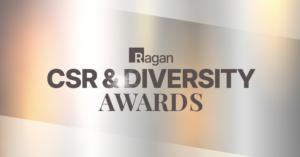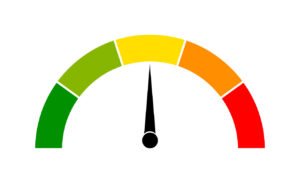Curating the week in wellness July 12–July 16, 2021: Crystallizing your wellness objectives, Countering widespread burnout, and more
The week’s essential content and fresh industry pickings for those dedicated to employee well-being.

Greetings, wellness pros.
We hope you enjoy this fresh collection of thought-provoking articles, savvy tips and takeaways.
As always, please get in touch with any ideas, suggestions or feedback on how we can serve you better. We are grateful for all the excellent work you do, and we wish you continued health and success in all your endeavors.
1. Reconsidering the vision, objectives and purpose of your programs.
On the heels of the Health Affairs study that poured cold water on the efficacy of workplace wellness programs, how should wellness pros respond?
One takeaway is that it’s high time to recalibrate expectations. This is also a good moment to crystallize what, exactly, you hope to accomplish through your wellness initiatives. The data seems to be pointing away from traditional goals such as lowering health care costs, retention and absenteeism.
As the study found, “Employees at BJ’s Wholesale Club who participated in the program for 18 months … saw no difference in outcomes or spending. There was no significant difference in improvement in health behaviors over an 18-month period compared to three years.”
However, that same group did “report better health behaviors.” That might be a tough thing to quantify, but healthier habits can have a profound impact on morale, engagement and even productivity. The study explains:
“Employees seemed to value the benefit, had heightened awareness of the importance of healthy behaviors and were trying to implement them. If employers are seeking to add benefits that workers value (or attract workers who value those benefits), the programs may be worth it.”
However:
“But if the goal is to save money by reducing health-care costs and absenteeism, or to improve chronic physical health conditions, the evidence so far is underwhelming.”
2. How to prevent burnout.
According to Psychology Today, those who work 55+ hours per week have a higher risk of stroke and heart disease. PT adds:
- Overwork and burnout contributed to more than 745,000 deaths in a year, according to a recent study by the World Health Organization.
- Over 60% employees suffer from workplace stress, costing $190 billion annually in health care costs.
- Employers can prevent burnout by providing wellness programming, incorporating mindfulness in the workplace and promoting psychological safety.
- Encourage employees to use their vacation time and their health benefits, including EAP benefits, health savings or flex spending accounts, and teletherapy.
You might also consider giving employees a quarterly “doona day” to decompress and spend as they please.
3. Using gamification to increase connectivity.
PC Mag reports on a new startup that’s “turning bonding into a game.”
If you’re stumped on how to keep colleagues connected and collaborating—and you’re (rightfully) skeptical of team-building events—Piffle might be worth a shot. PC Mag explains that the app will: “connect individuals via the voice-activated Google Assistant, which will offer interest-based social activities for teams while championing wellness as a cultural value,” adding that:
“The Piffle onboarding experience will allow people to personalize 3D avatars and create player profiles, selecting interests and causes that they care about. They then enter a team portal which leads to the pre-game lobby experience—a virtual space for teams to socialize in their downtime, with access to game rooms, group chats, and other playful features offering opportunities for social interaction.”
Sounds better than a Zoom, I suppose?
4. Takeaways from a roundup of reports on sustainability updates and ESG progress.
If you’re struggling to report on your company’s sustainability initiatives or philanthropic ventures, have a look at these heavy hitters’ recent reports:
- Fifth Third Bank (PDF link)
- T. Rowe Price
- Walmart
- Johnson & Johnson
- DuPont (which also uses video to nice effect)
5. What are the top post-pandemic benefits?
Employee Benefits News finds that employees rate financial wellness perks highly right now.
However, it’s crucial to close gaps between what you want and what your company’s able to deliver.
As EBN writes:
“It does take rigor, utilization of employee analytics, and follow-through, though, to create financial wellness programs that respond to the particular needs of employee segments. The best starting point is through a task force for the reset that brings together employees and retirement benefits specialists and whose work is clearly championed by company leadership.”
EBN offers three more steps to ensure the success of any financial wellness program:
- Dig deep into employee needs.
- Explore the possibilities—what’s needed and will be used.
- Get the word out, and build engagement.
6. As the Delta variant spreads, more businesses weigh vaccine mandates.
Has your company hammered out its return-to-work policies, or are you taking a “wait and see” approach? As vaccine rates stall and the Delta variant continues to spread, company leaders are faced with a tough choice.
Some large entities, such as Morgan Stanley, University of Colorado and Syracuse University, are requiring workers to be vaccinated. Many others are counting on incentives and “strongly urging” workers to get the jab.
Regardless of how you proceed, heed the guidance in this HR Exec column before making any ironclad calls on vaccine mandates.
7. Accommodating larger workers.
Do your DE&I policies make space for folks of all shapes and sizes?
This Fast Company piece offers five ways to create a more inclusive workplace for “fat” workers, including:
- For office furniture, “Think about including seats without arms or a combination of typical chairs and bench seating to accommodate larger bodies.”
- Prioritize size-inclusive swag.
- When structuring office wellness programs, make them weight neutral. Steer clear of weight loss challenges, which can be unhealthy.
- Examine your pay and hiring practices. “A 2018 LinkedIn study found that obese workers are paid roughly $2,500 less than thinner colleagues. And half of employers are less likely to hire obese employees than thinner employees.”
8. Tracking ROI on reskilling initiatives.
HBR sheds light on gauging the worth of skill-building initiatives and investments. The authors recommend monitoring:
- Cost metrics that “compare the cost of reskilling with that of not doing so.”
- Productivity metrics, which “quantify the impact of the skill-building program by measuring the change in the speed or effectiveness with which that skill is deployed.”
- People metrics, such as employee retention, which “measure the stability and satisfaction of your workforce.”
- Sponsor satisfaction metrics, which should “ask managers and leaders whether they think the training was useful for their team members.”
From there, you can create your own “scorecard” to determine the ROI of your efforts.
9. How to ensure employees feel heard.
HR Dive shares how honesty, credibility, trust and transparency can and (must) trickle down from the top, and it offers several smart tactics to make sure employees are feeling heard, respected and valued.







